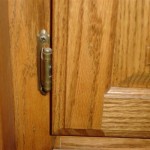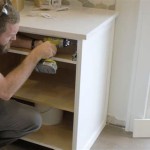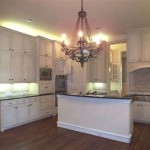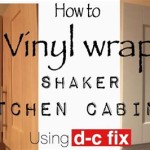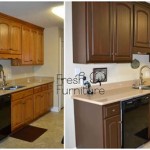Essential Aspects of Trim Below Kitchen Cabinets
Trim below kitchen cabinets serves a significant functional and aesthetic purpose in kitchen design. From enhancing safety to creating a polished appearance, understanding the essential aspects of cabinet trim is crucial for achieving an optimal kitchen space.
This article will delve into the vital considerations related to trim below kitchen cabinets, including materials, styles, installation techniques, and how they contribute to the overall functionality and ambiance of the kitchen.
Materials
The type of material used for cabinet trim can impact its durability, ease of maintenance, and appearance. Common materials include:
- Wood: Traditional and durable, offering a wide range of finishes
- MDF (Medium-density fiberboard): Affordable and paintable, providing versatility in design
- PVC (Polyvinyl chloride): Moisture-resistant and low-maintenance, available in various styles li>Metal: Durable and modern, adding a touch of industrial elegance
Styles
Cabinet trim comes in a variety of styles to complement different kitchen designs. Popular styles include:
- Baseboard trim: Covers the gap between the cabinet and flooring, protecting the cabinet from dirt and debris
- Cove molding: Creates a curved transition between the cabinet and countertop, adding visual interest
- Crown molding: Installed at the top of the cabinets, providing a decorative and classic finish
- Light rail molding: Runs horizontally along the bottom of the cabinets, concealing the gap between them and the countertop
Installation Techniques
Proper installation of cabinet trim is essential for its longevity and functionality. Common installation techniques include:
- Nailing: Using nails to secure the trim to the cabinet, providing a strong hold
- Adhesive: Applying adhesive to the back of the trim and pressing it into place, offering a less invasive method
- Clips: Using clips to hold the trim in place, allowing for easy removal for maintenance or replacement
Functionality and Aesthetics
Trim below kitchen cabinets plays a crucial role in the overall functionality and aesthetics of the kitchen:
- Concealing Gaps: Covers the gap between the cabinet and the floor or countertop, improving the visual appeal and preventing dirt accumulation
- Protecting the Cabinets: Protects the cabinets from kicks, bumps, and moisture, increasing their lifespan
- Enhancing Aesthetics: Adds decorative elements to the kitchen, complementing the cabinet design and enhancing the overall ambiance
By considering the essential aspects of trim below kitchen cabinets, homeowners and designers can make informed decisions that enhance the functionality, durability, and beauty of their kitchen space.

7 Types Of Cabinet Moldings And How To Use Them Properly

Adding Moldings To Your Kitchen Cabinets Remodelando La Casa

Moldings Finish And Trim With Gary Striegler Part 14

10 Types Of Kitchen Cabinet Molding For Your Home

How To Get A Custom Cabinet Look Using Trim Sincerely Marie Designs

3 Types Of Kitchen Cabinet Moldings Wood Factory

Adding Molding To Cabinets Make Them Look Built In Young House Love

Adding Molding To Cabinets Make Them Look Built In Young House Love

Adding Moldings To Your Kitchen Cabinets Remodelando La Casa

How To Add Molding Cabinets For A Gorgeous Finish Inspiration Moms
Related Posts

